Friday, February 28, 2014
"Once a verbal structure is read, and reread
often enough to be possessed, it 'freezes.'
It turns into a unity in which all parts exist at
once, without regard to the specific movement
of the narrative. We may compare it to the study
of a music score, where we can turn to any
part without regard to sequential performance."
— Northrop Frye in The Great Code

Gardner reportedly died at 65 on February 19.
A post linked to here on that date suggests some
musical remarks.
Comments Off on Score
|
From Northrop Frye's The Great Code: The Bible and Literature , Ch. 3: Metaphor I —
"In the preceding chapter we considered words in sequence, where they form narratives and provide the basis for a literary theory of myth. Reading words in sequence, however, is the first of two critical operations. Once a verbal structure is read, and reread often enough to be possessed, it 'freezes.' It turns into a unity in which all parts exist at once, without regard to the specific movement of the narrative. We may compare it to the study of a music score, where we can turn to any part without regard to sequential performance. The term 'structure,' which we have used so often, is a metaphor from architecture, and may be misleading when we are speaking of narrative, which is not a simultaneous structure but a movement in time. The term 'structure' comes into its proper context in the second stage, which is where all discussion of 'spatial form' and kindred critical topics take their origin."
|
Related material:
|
"The Great Code does not end with a triumphant conclusion or the apocalypse that readers may feel is owed them or even with a clear summary of Frye’s position, but instead trails off with a series of verbal winks and nudges. This is not so great a fault as it would be in another book, because long before this it has been obvious that the forward motion of Frye’s exposition was illusory, and that in fact the book was devoted to a constant re-examination of the same basic data from various closely related perspectives: in short, the method of the kaleidoscope. Each shake of the machine produces a new symmetry, each symmetry as beautiful as the last, and none of them in any sense exclusive of the others. And there is always room for one more shake."
— Charles Wheeler, "Professor Frye and the Bible," South Atlantic Quarterly 82 (Spring 1983), pp. 154-164, reprinted in a collection of reviews of the book.
|
For code in a different sense, but related to the first passage above,
see Diamond Theory Roullete, a webpage by Radamés Ajna.
For "the method of the kaleidoscope" mentioned in the second
passage above, see both the Ajna page and a webpage of my own,
Kaleidoscope Puzzle.
Thursday, February 27, 2014
Comments Off on Crossroads
Comments Off on Western Australia
(Continued)
"There is such a thing as a tesseract."
— Saying from Crosswicks
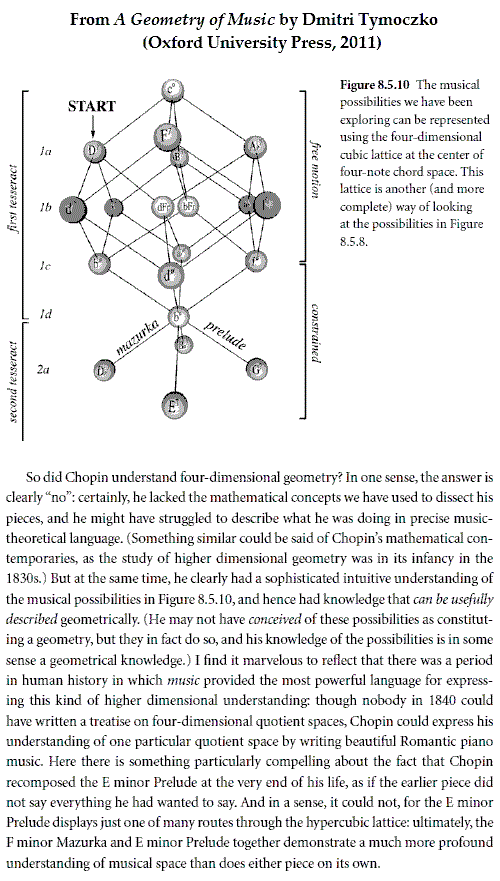
See also March 5, 2011.
Adapted from the above passage —
"So did L'Engle understand four-dimensional geometry?"
No and Yes.
Comments Off on The Crosswicks Curse
This morning's previous post, on sacred space,
linked to "Positively White Cube Revisited,"
an article by one Simon Sheikh.
Sheikh writes well, but he seems to be a disciple
of the damned Marxist lunatic Louis Althusser.
As Pynchon put it in Gravity's Rainbow ,
"For every kind of vampire, there is a kind of cross."

In this case, a video starring Sheikh on the exhibition "All That Fits"
suggests, by its filming date (May 27, 2011), a Maltese cross.
"The stuff that dreams are made of." — Bogart

(See also Oct. 25, 2012.)
Comments Off on Secular Space
"An image comes to mind of a white, ideal space
that, more than any single picture, may be the
archetypal image of 20th-century art."
— Brian O'Doherty, "Inside the White Cube"
Cube spaces exist also in mathematics.
Comments Off on Sacred Space, continued
Wednesday, February 26, 2014
in Stevens' "The Man with the Blue Guitar"
|
Author:
|
Ruszkowska-Buchowska, Dominika
|
|
Publication:
|
Studia Anglica Posnaniensia:
An International Review of English Studies
|
|
Article Type:
|
Critical essay
|
|
Date:
|
Jan 1, 2004
|
See also Blue Guitar
and Cubist Language Game
as well as Dali Cube.
Comments Off on Cubist Aesthetics…
The online New York TImes this morning —
|
Paco de Lucia, Renowned Flamenco Guitarist, Dies at 66
By REUTERS FEB. 26, 2014, 8:30 A.M. E.S.T.
MADRID — Paco de Lucia, the influential Spanish guitarist who vastly expanded the international audience for flamenco and merged it with other musical styles, died suddenly on Wednesday** of a heart attack in Mexico.
The 66-year-old virtuoso, as happy playing seemingly impossible syncopated flamenco rhythms as he was improvising jazz or classical guitar, helped to legitimize flamenco in Spain itself at a time when it was shunned by the mainstream.
|
Related material linked to here at midnight Monday-Tuesday —
Djelem Djelem.
Unrelated material, suggested merely by the upload dates of
two guitar videos* — See Oct. 25, 2008, and Oct. 26, 2011.
* El Toro – Malagueña (guitarist: Canabarro) and Light and Shade
(guitarist: de Lucia).
** Update of 12:26 PM ET — Other reports now say de Lucia died
not today, Wednesday, Feb. 26, but rather on Tuesday, Feb. 25.
Comments Off on Blue Guitar
Tuesday, February 25, 2014
The title of a review of Charles Taylor's book A Secular Age
was quoted here at noon last Saturday —
"The Place of the Sacred
in the Absence of God."
My comment from last Saturday —
"The place of the sacred is not, perhaps,
Davos, but a more abstract location."
A sequel —
"Religious Experience and the Modern Self,"
by Ross Douthat in The New York Times
today at 4:25 PM ET —
"The argument comes from the Canadian
philosopher Charles Taylor and his
doorstop-thick magnum opus A Secular Age …."
Related material:
Helprin Doors and Doorstop Thick.
Comments Off on The Argument
(Continued)
From Log24 on Jan. 13, 2014 —
"We have a clip." — Kalle (Kristen Wiig on SNL)

Comments Off on Ten is a Hen

I do not follow the Public Library of Science (PLOS), although,
as shown above, I do follow some of the followers.
This post was suggested by Amy Hubbard's recent reference
to a PLOS article on beliefs in Hell.
Pop culture seems more informative. Readers of the PLOS article
should also know about the Dakota, John Lennon, and Rosemary's
Baby, as well as Woody Allen, The Ninth Gate , and Plan 9 from
Outer Space.
Comments Off on Followers
"What a lovely singing voice you must have."
— Bill Murray in Ghostbusters (1984)
Contestant One: Ruth Margraff
Contestant Two: Sandra Sangiao
Comments Off on Singing Contest
Monday, February 24, 2014
See Stadium Devildare, Church Notes, and Ruth Margraff*.
Ruthless : A Brief Drama —
"There is no ____ , there is only Zuul."
— Adapted from Ghostbusters
* In a webpage dated July 25, 2007.
See also this journal on that date.
Comments Off on Second City

Katy Perry in her new "Dark Horse" video—
"So you wanna play with magic.
Boy you should know what you're fallin' for.
Baby do you dare to do this?"
Bill Murray in Ghostbusters —
"Is this a trick question?"
Comments Off on Devildare
Or: Plan 9, Continued
For the late Harold Ramis .

See also 2/02 and 2/13.
Comments Off on Dr. Spengler’s Experiment
Sunday, February 23, 2014
Serge Lang, Collected Papers, Vol. 4 , p. 179—
"I find it appropriate to quote here a historical
comment made by Halberstam…."
This is Heini Halberstam, who reportedly died
on January 25, 2014.
I find it appropriate to quote here an unhistorical
comment made by a fictional character —
“The test?” I faltered, staring at the thing.
“Yes, to determine whether you can live
in the fourth dimension or only die in it.”
— From Fritz Leiber's classic story
"Damnation Morning"
The Leiber quote was suggested by the posts
in this journal on the day of Halberstam's death.
Comments Off on Or Only Die
Lang to Langlands
|
Lang —
“Elliptic functions parametrize elliptic curves, and the intermingling of the analytic and algebraic-arithmetic theory has been at the center of mathematics since the early part of the nineteenth century.”
— Serge Lang, preface to Elliptic Functions (second edition, 1987)
Langlands —
“The theory of modular functions and modular forms, defined on the upper half-plane H and subject to appropriate tranformation laws with respect to the group Gamma = SL(2, Z) of fractional linear transformations, is closely related to the theory of elliptic curves, because the family of all isomorphism classes of elliptic curves over C can be parametrized by the quotient Gamma\H. This is an important, although formal, relation that assures that this and related quotients have a natural structure as algebraic curves X over Q. The relation between these curves and elliptic curves predicted by the Taniyama-Weil conjecture is, on the other hand, far from formal.”
— Robert P. Langlands, review of Elliptic Curves , by Anthony W. Knapp. (The review appeared in Bulletin of the American Mathematical Society , January 1994.)
|
Comments Off on Sunday School
Saturday, February 22, 2014
Some narrative notes in memory of a
Bowling Green State University math professor
who reportedly died at 72 on Feb. 13—
That date in this journal and Green Fields.
See also Nine is a Vine.
Those who prefer mathematics to narrative may
also prefer to read, instead of the notes above,
some material on the dead professor's specialty,
Diophantine equations. Recommended:
Mordell on Lang and Lang on Mordell as well as
Lang's article titled
"Mordell's Review, Siegel's Letter to Mordell,
Diophantine Geometry, and 20th Century Mathematics."
Some background —

Comments Off on Green Fields
The title was suggested by a 1921 article
by Hermann Weyl and by a review* of
a more recent publication —

The above Harvard Gazette piece on Davos is
from St. Ursula’s Day, 2010. See also this journal
on that date.
See as well a Log24 search for Davos.
A more interesting piece by Peter E. Gordon
(author of the above Davos book) is his review
of Charles Taylor’s A Secular Age .
The review is titled
“The Place of the Sacred
in the Absence of God.”
(The place of the sacred is not, perhaps, Davos,
but a more abstract location.)
* Grundlagenkrise was a tag for a Jan. 13, 2011,
review in The New Republic of Gordon’s
book on Cassirer and Heidegger at Davos.
Comments Off on Grundlagenkrise*
Friday, February 21, 2014
Despite the blocking of Doodles on my Google Search
screen, some messages get through.
Today, for instance —
"Your idea just might change the world.
Enter Google Science Fair 2014"
Clicking the link yields a page with the following image—

Clearly there is a problem here analogous to
the square-triangle coordinatization problem,
but with the 4×6 rectangle of the R. T. Curtis
Miracle Octad Generator playing the role of
the square.
I once studied this 24-triangle-hexagon
coordinatization problem, but was unable to
obtain any results of interest. Perhaps
someone else will have better luck.
* For a rather different use of this word,
see Hermann Weyl in the Stanford
Encyclopedia of Philosophy.
Comments Off on Raumproblem*
Comments Off on Illumined by Day
One way of interpreting the symbol 
at the end of yesterday's post is via
the phrase "necessary possibility."
See that phrase in (for instance) a post
of July 24, 2013, The Broken Tablet .
The Tablet post may be viewed in light
of a Tom Wolfe passage quoted here on
the preceding day, July 23, 2013—

On that day (July 23) another weblog had
a post titled
Wallace Stevens: Night's Hymn of the Rock.
Some related narrative —

I prefer the following narrative —
Part I: Stevens's verse from "The Rock" (1954) —
"That in which space itself is contained"
Part II: Mystery Box III: Inside, Outside (2014)
Comments Off on Night’s Hymn of the Rock
Thursday, February 20, 2014
(Continued)
A review of this date in 2005 —
Modal Theology
“We symbolize logical necessity
with the box ( )
)
and logical possibility
with the diamond ( ).”
).”
— Keith Allen Korcz
And what do we
symbolize by  ?
?
Comments Off on Relativity Blues
Wednesday, February 19, 2014

See also a related brick wall.
Some context: Small World (July 12, 2004)
and Moss on the Wall (Sept. 10, 2013).
Comments Off on The Bitter Beginning
Tuesday, February 18, 2014
The New York Times online this evening
has two passages of interest.
From an obituary by Helen T. Verongos of
fiction writer Mavis Gallant—
"Ms. Gallant also endowed children with
special powers that vanish as they grow up.
In 'The Doctor,' she wrote: 'Unconsciously,
everyone under the age of 10 knows
everything. Under-ten can come into a room
and sense at once everything felt, kept
silent, held back in the way of love, hate and
desire, though he may not have the right
words for such sentiments. It is part of the
clairvoyant immunity to hypocrisy we are born
with and that vanishes just before puberty.' "
From a review by William Grimes of a memoir
by non-fiction writer Joachim Fest—
"Not I shrinks the Wagnerian scale of
German history in the 1930s and 1940s to
chamber music dimensions. It is intensely
personal, cleareyed and absolutely riveting,
partly because the author, thrust into an
outsider’s position, developed a keen
appreciation of Germany’s contradictions
and paradoxes."
Related material in this journal—
Octobers for Fest (Sept. 13, 2006).
Comments Off on Chamber Music
For Oslo artist Josefine Lyche, who sometimes
seems to think my work resembles that of the
deranged Anthony Hopkins in the film of David
Auburn's play "Proof."
See another artist's images of Hopkins-like work
I just discovered online —
"The Proof," by David Colosi.
Comments Off on Proofs
Edward Frenkel on Eichler's reciprocity law
(Love and Math , Kindle edition of 2013-10-01,
page 88, location 1812)—
"It seems nearly unbelievable that there
would be a rule generating these numbers.
And yet, German mathematician Martin
Eichler discovered one in 1954.11 "
"11. I follow the presentation of this result
given in Richard Taylor, Modular arithmetic:
driven by inherent beauty and human
curiosity , The Letter of the Institute for
Advanced Study [IAS], Summer 2012,
pp. 6– 8. I thank Ken Ribet for useful
comments. According to André Weil’s book
Dirichlet Series and Automorphic Forms ,
Springer-Verlag, 1971 [pp. 143-144], the
cubic equation we are discussing in this
chapter was introduced by John Tate,
following Robert Fricke."
|
Update of Feb. 19:
Actually, the cubic equation discussed
by Frenkel and by Taylor (see below) is
Y 2 + Y = X 3 – X 2
whereas the equation given by Weil,
quoting Tate, is
Y 2 – Y = X 3 – X 2 .
Whether this is a misprint in Weil's book,
I do not know.
At any rate, the cubic equation discussed by
Frenkel and earlier by Taylor is the same as
the cubic equation discussed in greater detail
by Henri Darmon in "A Proof of the Full
Shimura-Taniyama-Weil Conjecture Is
Announced," AMS Notices , Dec.1999.
For further background, see (for instance)
John T. Tate, "The Arithmetic of Elliptic
Curves," in Inventiones Mathematicae
Volume 23 (1974), pp. 179 – 206, esp. pp.
200-201.
|
Richard Taylor, op. cit. —
|
One could ask for a similar method that given any number of polynomials in any number of variables helps one to determine the number of solutions to those equations in arithmetic modulo a variable prime number p . Such results are referred to as “reciprocity laws.” In the 1920s, Emil Artin gave what was then thought to be the most general reciprocity law possible—his abelian reciprocity law. However, Artin’s reciprocity still only applied to very special equations—equations with only one variable that have “abelian Galois group.”
Stunningly, in 1954, Martin Eichler (former IAS Member) found a totally new reciprocity law, not included in Artin’s theorem. (Such reciprocity laws are often referred to as non-abelian.) More specifically, he found a reciprocality [sic ] law for the two variable equation
Y 2 + Y = X 3 – X 2.
He showed that the number of solutions to this equation in arithmetic modulo a prime number p differs from p [in the negative direction] by the coefficient of q p in the formal (infinite) product
q (1 – q 2 )(1 – q 11) 2 (1 – q 2)2
(1 – q 22 )2 (1 – q 3)2 (1 – q 33)2
(1 – q 4)2 … =
q – 2q2 – q3 + 2q4 + q5 + 2q6
– 2q7 – 2q9 – 2q10 + q11 – 2q12 + . . .
For example, you see that the coefficient of q5 is 1, so Eichler’s theorem tells us that
Y 2 + Y = X 3 − X 2
should have 5 − 1 = 4 solutions in arithmetic modulo 5. You can check this by checking the twenty-five possibilities for (X,Y) modulo 5, and indeed you will find exactly four solutions:
(X,Y) ≡ (0,0), (0,4), (1,0), (1,4) mod 5.
Within less than three years, Yutaka Taniyama and Goro Shimura (former IAS Member) proposed a daring generalization of Eichler’s reciprocity law to all cubic equations in two variables. A decade later, André Weil (former IAS Professor) added precision to this conjecture, and found strong heuristic evidence supporting the Shimura-Taniyama reciprocity law. This conjecture completely changed the development of number theory.
|
With this account and its context, Taylor has
perhaps atoned for his ridiculous remarks
quoted at Log24 in The Proof and the Lie.
Comments Off on Eichler’s Reciprocity Law
Monday, February 17, 2014

Thanks to SackLunch.net for the above brief catechism:
Q — What must I do to be saved?
A — Search.
Comments Off on Catechism for Presidents’ Day
Sunday, February 16, 2014
Music Box … Continues.
Today's print New York Times has articles on experimental and
New Age music —
In the Church of Difficult Music and
For New Age, the Next Generation.
I prefer Old Age music… for instance, that of Tony Rice —
also the subject of an article in today's print Times .

The Times image at right above is of Croagh Patrick.
Comments Off on Raiders of the Lost…
ROSENCRANTZ:
… Do you ever think of yourself as
actually dead, lying in a box with a lid on it?
GUILDENSTERN:
No.
ROSENCRANTZ:
Nor do I, really… It's silly to be depressed by it.
I mean one thinks of it like being alive in a box,
one keeps forgetting to take into account the fact
that one is dead… which should make all the
difference… shouldn't it? I mean, you'd never know
you were in a box, would you? It would be just like
being asleep in a box.
— Tom Stoppard
See also last Sunday's sermon (Feb. 9) and
Mystery Box III: Inside, Outside (Feb. 10).
Comments Off on Sermon
Saturday, February 15, 2014
(Continued)
See The Oslo Version in this journal and the New Year’s Day 2014 post.
The pictures of the 56 spreads in that post (shown below) are based on
the 20 Rosenhain and 15 Göpel tetrads that make up the 35 lines of
PG(3,2), the finite projective 3-space over the 2-element Galois field.
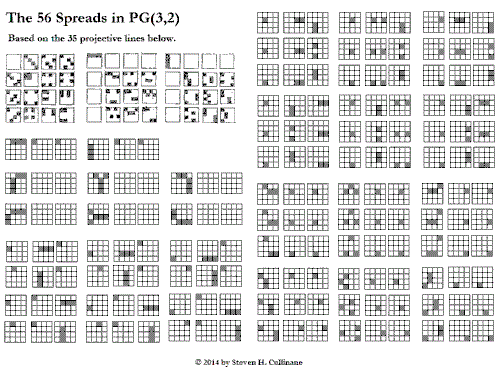
Click for a larger image.
Comments Off on Rosenhain and Göpel
Friday, February 14, 2014
Continued from Game Boy (August 6, 2006) —
See True Grid (Jan. 8, 2011) and Snow Queen.
Comments Off on Ein Satz
See a Haaretz story commemorating the Feb. 14,
1917, birthday of a crystallographer.
Related material in this journal —
At the Still Point (June 15, 2013):

The illustration is for those who, like Andy Magid and
Steven Strogatz in the March 2014 AMS Notices,
enjoy the vulgarization of mathematics.
Backstory: Group Actions (November 14, 2012).
Comments Off on Haaretz Valentine
“… the object sets up a kind of
frame or space or field
within which there can be epiphany.”
— Charles Taylor
A frame or space or field —

Related material —
Star Wars (January 11, 2014),
The Lyche Gate Asterisk , from 10:31 AM ET on May 22, 2010,
the date of Martin Gardner's death —
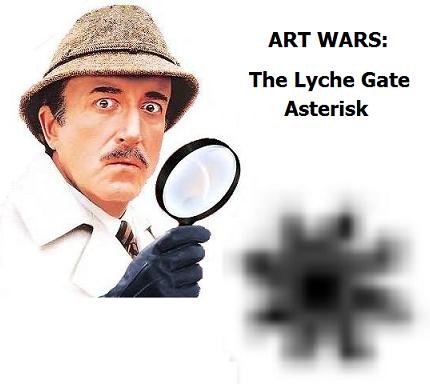
— and the March 2014 issue of the
Notices of the American Mathematical Society —

See as well Epiphany 2014 (Jan. 6) in this journal and the
March Notices on the Shaw prize —
"Established under the auspices of Run Run Shaw
in November 2002, the prize is managed and
administered by the Shaw Prize Foundation
based in Hong Kong."
Comments Off on Epiphany
Thursday, February 13, 2014
(Continued)
The final link in today's previous post leads to
a post whose own final link leads to…
Thursday, December 13, 2012
… The sequel to Vibrations
Charles Taylor, "Epiphanies of Modernism,"
Chapter 24 of Sources of the Self
(Cambridge U. Press, 1989, p. 477) —
“… the object sets up a kind of
frame or space or field
within which there can be epiphany.”
Or place.
See A Prince of Darkness
and "A Clean, Well-Lighted Place."
|
Comments Off on Plan 9

Frank Langella as Dracula
(opened on Broadway in October, 1977)
Related material: Bat Signal.
Comments Off on Fashion Week — The Conclusion
Part I: Continued from January 20 — "Arising Heaven" —
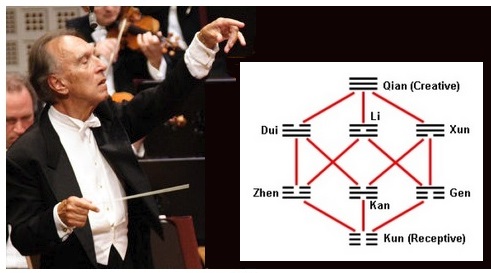
Part II: The Stars My Destination in this journal

Part III: Ender's Game —

* The title refers to a character, Rogue Winter, in Alfred Bester's
1981 novel The Deceivers .
Comments Off on Winter’s Game*
Wednesday, February 12, 2014
(A sequel to yesterday's Raiders of the Lost Music Box)

See, in this book, "Walsh Functions: A Digital Fourier Series,"
by Benjamin Jacoby (BYTE , September 1977). Some context:
Symmetry of Walsh Functions.
Comments Off on But Seriously…

In memoriam — Selah.
Comments Off on A Force of Nature
Tuesday, February 11, 2014
Music Box


Comments Off on Raiders of the Lost…
Continued from a post of January 28 —
In Memory of Pete Seeger.
The spiritual tribute link in that post suggests a review
of the following page from a pop-philosophy novel —
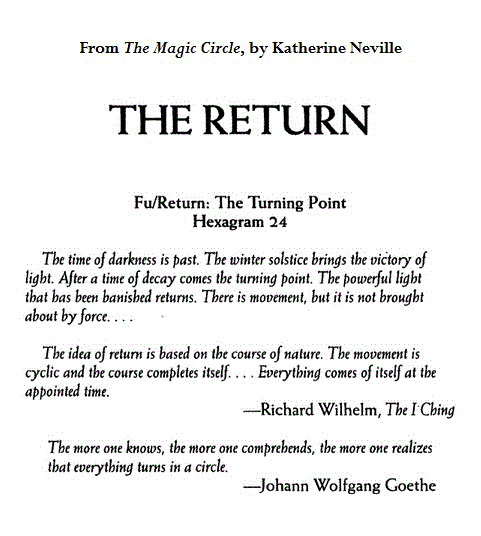
"Turn, turn, turn." — Pete Seeger. See also this morning's news.
Comments Off on Everybody Comes to Rick’s
Monday, February 10, 2014
(Continued from Mystery Box, Feb. 4, and Mystery Box II, Feb. 5.)
The Box

Inside the Box

Outside the Box

For the connection of the inside notation to the outside geometry,
see Desargues via Galois.
(For a related connection to curves and surfaces in the outside
geometry, see Hudson's classic Kummer's Quartic Surface and
Rosenhain and Göpel Tetrads in PG(3,2).)
Comments Off on Mystery Box III: Inside, Outside
Sunday, February 9, 2014
A New York Times Sunday Magazine article today
about Reek Sunday (the last Sunday in July) suggests
a review of that Sunday last year, and hence also of
a related post from the Feast of the Transfiguration
nine days later.
Comments Off on Sermon
The late mathematics educator Zoltan Dienes in 2002 published
an article containing the following cryptic confession —
"Nowhere will I give away how I stole these patterns
from the mathematician's secret closet."
Some of the patterns he may have been referring to were
hardly secret. See a website recorded in the Internet Archive
on the Feast of St. Nicholas, 2000.
Comments Off on Sunday School
See “Babbled” in this journal and …

Update of 3:15 AM ET —
Suggestions for Terry Gilliam, director of The Zero Theorem and Brazil —
See posts of April 26, 2013, and of February 2, 2014, as well as
a note from the São Paulo Symphony Orchestra.
Comments Off on Green Night
Saturday, February 8, 2014
From this journal on Jan. 26, 2009 —

See also "Strip Mathematics," by Zoltan Dienes —

This illustration may have first appeared in Dienes's
"Mathematical fun without numbers, letters,
formulae or equations, Part I,"
The New Zealand Mathematics Magazine,
Vol 39, no.1. (May 2002)*
Material related to New Zealand —
See January 29, 2003 in this journal.
Material related to mathematics (without "fun") —
The Representation of Minus One.
General context —
Bester's The Deceivers in this journal.
* Update of 5:48 PM ET Feb. 8, 2014 — From that publication —
"Nowhere will I give away how I stole these patterns
from the mathematician's secret closet." — Zoltan Dienes
Comments Off on The Village
"Olympic opening ceremonies are a little like
a Match.com first date…."
— Alessandra Stanley, page D4 of the New York
edition of this morning's print NY Times
The late poet Rubén Darío, who died on Feb. 6, 1916—
"The snow-white Olympic swan …
preens his eucharistic wing"
The late poet Maxine Kumin, who died on Feb. 6, 2014—
"They gave me the morning-after pill"
Comments Off on A Little Like
Thursday, February 6, 2014
For the late mathematics educator Zoltan Dienes.
“There comes a time when the learner has identified
the abstract content of a number of different games
and is practically crying out for some sort of picture
by means of which to represent that which has been
gleaned as the common core of the various activities.”
— Article by “Melanie” at Zoltan Dienes’s website
Dienes reportedly died at 97 on Jan. 11, 2014.
From this journal on that date —
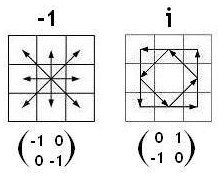
A star figure and the Galois quaternion.
The square root of the former is the latter.
Update of 5:01 PM ET Feb. 6, 2014 —
An illustration by Dienes related to the diamond theorem —

See also the above 15 images in …

… and versions of the 4×4 coordinatization in The 4×4 Relativity Problem
(Jan. 17, 2014).
Comments Off on The Representation of Minus One
Wednesday, February 5, 2014
Continued from previous post and from Sept. 8, 2009.

Examination of the box's contents does not solve
the contents' real mystery. That requires knowledge
of the non-Euclidean geometry of Galois space.
In this case, without that knowledge, prattle (as in
today's online New York Times ) about creativity and
"thinking outside the box" is pointless.
Comments Off on Mystery Box II
Tuesday, February 4, 2014
In honor of the tenth anniversary of Facebook

Viewed in the Chrome browser, a Facebook post from
January 29, 2014, displays an artist's Mystery Box*…

In the Internet Explorer browser, the mystery is solved:

Further details —

Related material — Lyche + Geometry in this journal.
See also the cat and triangle pictured by David Justice yesterday—
 .
.
* A phrase of filmmaker J.J. Abrams. Click the link
for further details. See also a mystery box
in The New York Times on June 2, 2011.
Comments Off on Mystery Box
Monday, February 3, 2014
Moss on the Wall (Continued)
Tom Cruise at the Vatican in Mission: Impossible III (2006) —

Starring Tom Cruise as Ezekiel Moss, "a mysterious drifter
with the divine ability to channel and physically inhabit
the spirits of the dead."
— The quote is from "Philip Seymour Hoffman
Project 'Ezekiel Moss' Will Not Be Sold In Berlin*"
at Deadline.com.
See also Hereafter + Damon in this journal, as well as
the upload date for the above clip: Oct. 6, 2011.
* Here "Berlin" refers to the upcoming
European Film Market, Feb. 6-14
Comments Off on Occupy Wall
This journal a year ago yesterday—
“Some designs work subtly.
Others are successful through sheer force.”
— Penelope Green
Subtly:

Sheer force:

Comments Off on Designs
Sunday, February 2, 2014
The title is a reference to the Jan. 4 post "Learning Guide."

Update of 7:59 PM ET Feb. 2 —
"… they entered the apartment together around 11:30 a.m."
— NY Times today on the discovery of Hoffman's body.
Synchronicity: Today's 11 AM (ET) Log24 post, as well as
a 2007 Hoffman film involving drugs, jewels, and a planned
escape to Brazil —
"May you be in heaven a full half-hour
before the devil knows you're dead ."
Comments Off on Say It With Flowers
A ReCode Project program from Radamés Ajna of São Paulo —
At the program's webpage, click the image to
generate random permutations of rows, columns,
and quadrants. Note the resulting image's ordinary
or color-interchange symmetry.
Comments Off on Diamond Theory Roulette

Alec Baldwin as Lamont Cranston

Compare and contrast with the psychoanalyst in Remembrance
(January 27, 2014).
Comments Off on A Shadow for Groundhog Day
Saturday, February 1, 2014
A sequel to Friday afternoon's Diamond Star
Diamond Star —

Log24 on January 7, 2012 —
Context — All posts tagged "Eden."
Comments Off on ART WARS (continued)

See also the above upload date.
Comments Off on Art

See a New York Times story on some art from Delft.
This may be read as a prequel (online Jan. 30) to
two Log24 posts — yesterday's Diamond Star and
this morning's Delft Version.
Comments Off on But Is It Art?
My webpage "The Order-4 Latin Squares" has a rival—
"Latin squares of order 4: Enumeration of the
24 different 4×4 Latin squares. Symmetry and
other features."
The author — Yp de Haan, a professor emeritus of
materials science at Delft University of Technology —

The main difference between de Haan's approach and my own
is my use of the four-color decomposition theorem, a result that
I discovered in 1976. This would, had de Haan known it, have
added depth to his "symmetry and other features" remarks.
Comments Off on The Delft Version













































 .
.













